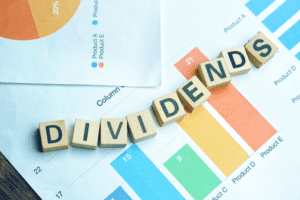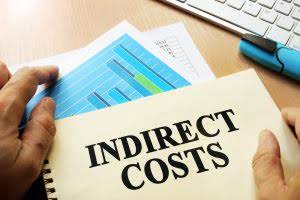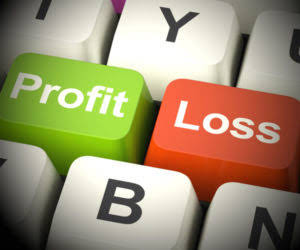Understanding Double Declining Balance Depreciation
05 Th4, 2023 admin

Applying the double-declining balance method involves a year-by-year calculation of depreciation expense. For the first year, the beginning book value is the asset’s original cost. While the double declining balance method has its perks, it does come with a few drawbacks.
- Firms depreciate assets on their financial statements and for tax purposes in order to better match an asset’s productivity in use to its costs of operation over time.
- If applying the DDB rate in any given year would cause the asset’s book value to fall below its salvage value, the depreciation expense for that year must be adjusted.
- Standard declining balance uses a fixed percentage, but not necessarily double.
- One such method is the Double Declining Balance Method, an accelerated depreciation technique that allows for a more significant portion of an asset’s cost to be expensed in the earlier years of its life.
- Accelerated depreciation techniques charge a higher amount of depreciation in the earlier years of an asset’s life.
- Depreciation is an accounting process by which a company allocates an asset’s cost throughout its useful life.
Middle Years Depreciation
The DDB Excel function, which stands for Double Declining Balance Depreciation, is designed to facilitate the calculation of an asset’s depreciation over time. The function is particularly applicable to assets that lose their value at a faster rate during the initial years of use and gradually decrease in depreciation amount after that. However, in practice, assets may be acquired or disposed of at different times during the year, necessitating mid-year calculations for depreciation. To account for mid-year depreciation, the straight-line depreciation percent should be adjusted accordingly. For instance, if an asset is purchased in the middle of Year 1, only half of the depreciation expense should be recorded in that year. The remaining depreciation should be distributed over the remaining years.
Using the 200% Double Declining Balance Depreciation Method
Leveraging AI in accounting allows businesses to focus on strategic decision-making, reduce errors, and enhance overall financial management. By integrating AI, companies can ensure precise and efficient handling of their asset depreciation, ultimately improving their financial operations. The Units of Output Method links depreciation to the actual usage of the asset. It is particularly suitable for assets HOA Accounting whose usage varies significantly from year to year. This approach ensures that depreciation expense is directly tied to an asset’s production or usage levels.
Double Declining Balance Method Formula (How to Calculate)

This includes the purchase price and any directly attributable costs such as shipping, installation fees, and necessary setup expenses. These expenditures are capitalized, meaning they are recorded as part of the asset’s value on the balance sheet, rather than being expensed immediately. Under the generally accepted accounting principles (GAAP) for public companies, expenses are recorded in the same period as the revenue that is earned as a result of those expenses. For reporting purposes, accelerated depreciation results in the recognition of a greater depreciation expense how to calculate double declining balance in the initial years, which directly causes early-period profit margins to decline. When the assets are used for business operation, the normal wear and tear are obvious. Therefore, the business management will incur maintenance costs to keep the machinery, equipment, and assets operational.

HighRadius Named a Challenger In 2025 Gartner® Magic Quadrant™ for Financial Close and Consolidation Solutions
This application of the fixed rate to the declining book value results in higher depreciation expenses in earlier years and lower expenses as the asset ages. This differs from the straight-line method, which allocates an equal amount of depreciation each year. The example demonstrates the core mechanics before considering salvage value limits or method switches. To calculate depreciation expense, multiply the constant double-declining balance rate by the asset’s beginning book value.
An asset cannot be depreciated below its salvage value, even if it’s zero. Before calculating depreciation, specific financial details about the asset are necessary. These components provide the baseline for determining how an asset’s value decreases over its operational life. This approach is reasonable when the utility of an asset is being consumed at a more rapid rate during the early part of its useful life.
Method 2 – Applying DDB Function (Double Declining Balance Depreciation Formula) in Excel
Each method offers its unique spin on how to distribute the cost of an asset throughout its useful life. You’ve got the straight-line method, https://www.morbilloshop.it/ledger-home-of-the-first-and-only-certified/ the dependable classic, reducing value evenly, like slicing a pie into equal parts. Then there’s the declining balance method, more aggressive, chiseling away more value upfront and less over time. An asset’s book value (original cost less accumulated depreciation) changes with DDB. Due to its accelerated nature, book value declines more rapidly in early years than straight-line depreciation, reflecting higher upfront depreciation expense. Depreciation stops when the asset’s book value reaches its salvage value; it cannot be depreciated below this amount.

Financial Close Solution
This method is faster than both the sum-of-the-years’ digits and straight-line methods. Apply this rate to the asset’s remaining book value (cost minus accumulated depreciation) at the start of each year. So if an asset with a 10-year life and no salvage value depreciates at 10% per year straight-line, the DDB rate would be 20%. Each year, as your assets get older and less efficient, their value decreases. Depreciation lets you record this decrease in value on your financial statements. It turns the initial cost of the asset into an ongoing expense, spread across the asset’s useful life, giving you a more accurate financial picture.
- In case of any confusion, you can refer to the step by step explanation of the process below.
- Accumulated depreciation increases to $32,000 ($20,000 + $12,000), and the ending book value is $18,000 ($30,000 – $12,000).
- These methods help to more accurately reflect the wear and tear on an asset, as assets tend to depreciate faster early in their life.
- In summary, the choice between the DDB and straight-line depreciation methods depends on a company’s specific financial goals and strategies.
- In the investing sector as well as corporate financial management, DCF analysis is frequently employed since it may be used to evaluate a stock, company, or project, among many other assets or activities.
- Depreciation stops once the book value reaches the salvage value, ensuring the asset is not over-depreciated.
- Depreciation rates used in the declining balance method could be 150%, 200% (double), or 250% of the straight-line rate.
Debt to Net Worth Ratio – Understanding Financial Health

Have you ever wondered why some companies write off a large chunk of an asset’s value early in its first years? The Double Declining Balance (DDB) depreciation method shows a powerful way to accelerate expense recognition, especially for assets that draw value quickly in their early years. Unlike straight-line depreciation, DDB doubles the rate, providing bigger deductions upfront and reflecting actual usage patterns more realistically. Financial analysts often use the DDB function to project the depreciation expense of assets, which helps in creating accurate financial statements and forecasts. For example, a $100,000 asset with a 40% DDB rate has $40,000 first-year depreciation ($100,000 x 40%).

